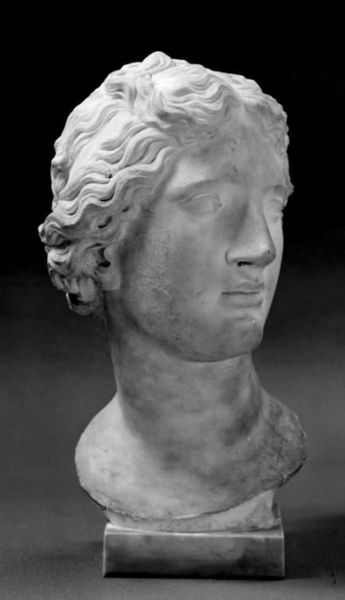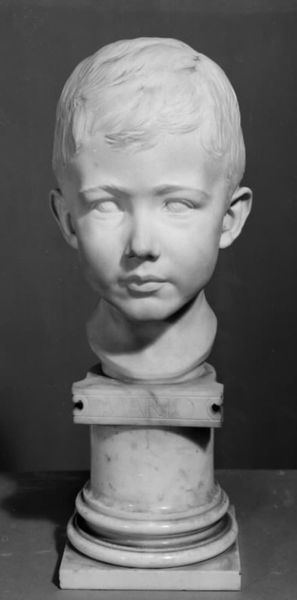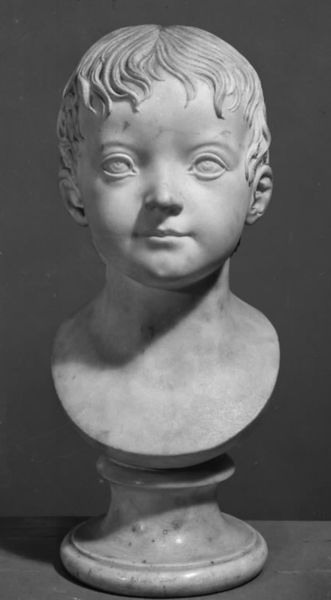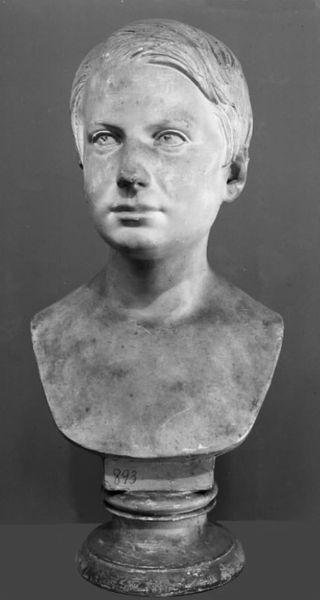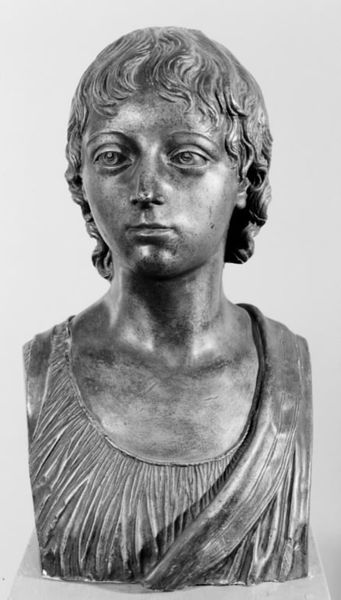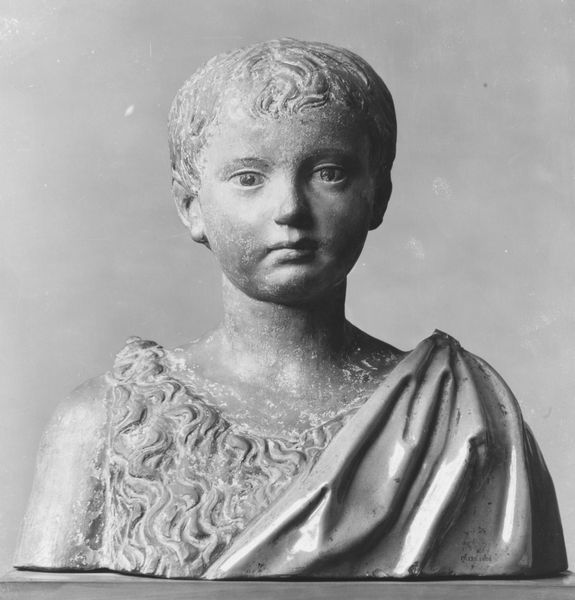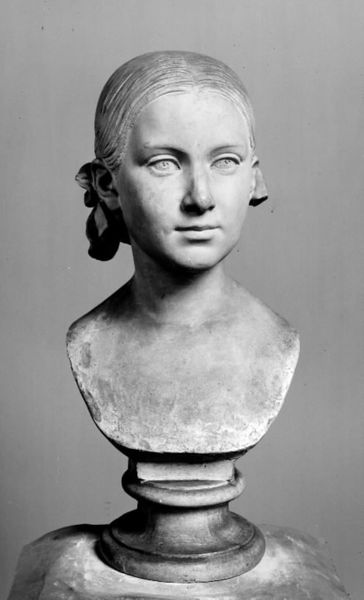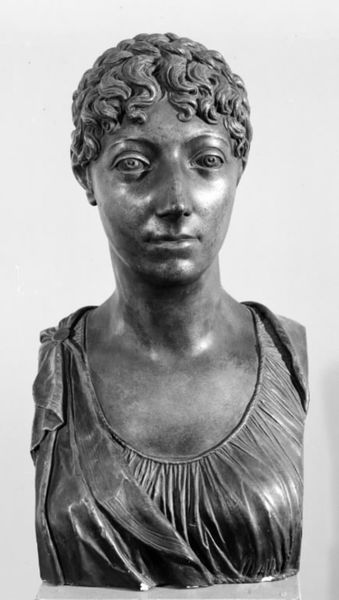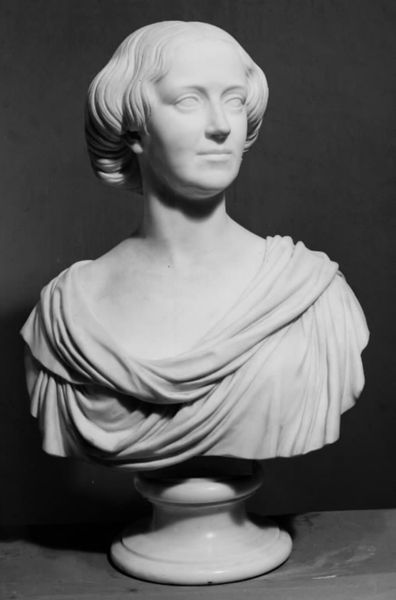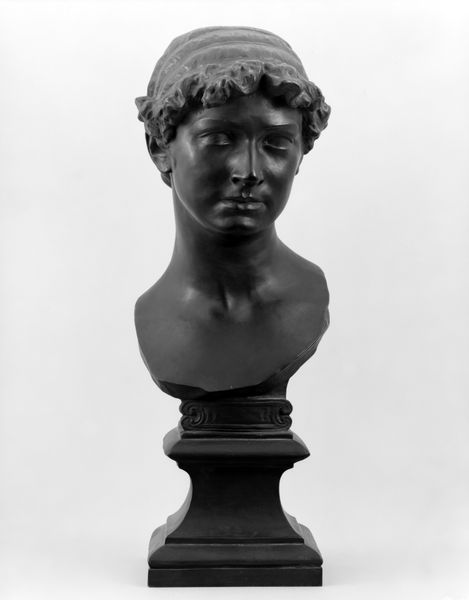
Young Saint John the Baptist 1461 - 1471
0:00
0:00
sculpture, marble
#
portrait
#
portrait
#
sculpture
#
sculpture
#
history-painting
#
decorative-art
#
marble
#
italian-renaissance
#
statue
Dimensions: Height: 14 1/2 in. (36.8 cm)
Copyright: Public Domain
Curator: Look at this bust; it exudes a sense of serene contemplation. Editor: It does. What are we looking at here? Curator: This is "Young Saint John the Baptist," crafted in marble by Mino da Fiesole sometime between 1461 and 1471. It's an exquisite example of Italian Renaissance sculpture currently held at The Metropolitan Museum of Art. Editor: The Renaissance loved depicting youth, didn't they? It feels particularly loaded here given who he would become. There's a vulnerability but also a firmness in his gaze. Curator: Absolutely. His portrayal is particularly interesting in light of societal constructs surrounding sanctity. The gaze you mentioned suggests an awareness, perhaps even acceptance, of his destined role. Consider how the choice to represent John so young impacts the work's resonance. It speaks to the power structures and religious expectations projected onto individuals from a very early age. Editor: I see the marble as participating in that dynamic. Think about its deployment historically; here, its polished smoothness renders him idealized, immaculate almost. Marble as a signifier contributes to his icon status. But then I look closer and question that immaculate interpretation: note the carved flowers, their delicate forms suggesting growth and life yet permanently fixed in stone. It reminds me of the many constraints surrounding artistic expression, even within commissions as seemingly straightforward as this. Curator: That's insightful. We could even link this to contemporary discussions about identity, considering how historical representations have shaped perceptions and self-perceptions of individuals. Editor: Definitely. This piece provokes so many reflections on power, faith, representation, and how artists both uphold and subtly subvert the conventions of their time. Curator: Agreed. It is in how these dialogues around pieces from our collection can shift, accommodating evolving societal paradigms and critical lenses, that our collective understanding deepens.
Comments
No comments
Be the first to comment and join the conversation on the ultimate creative platform.

